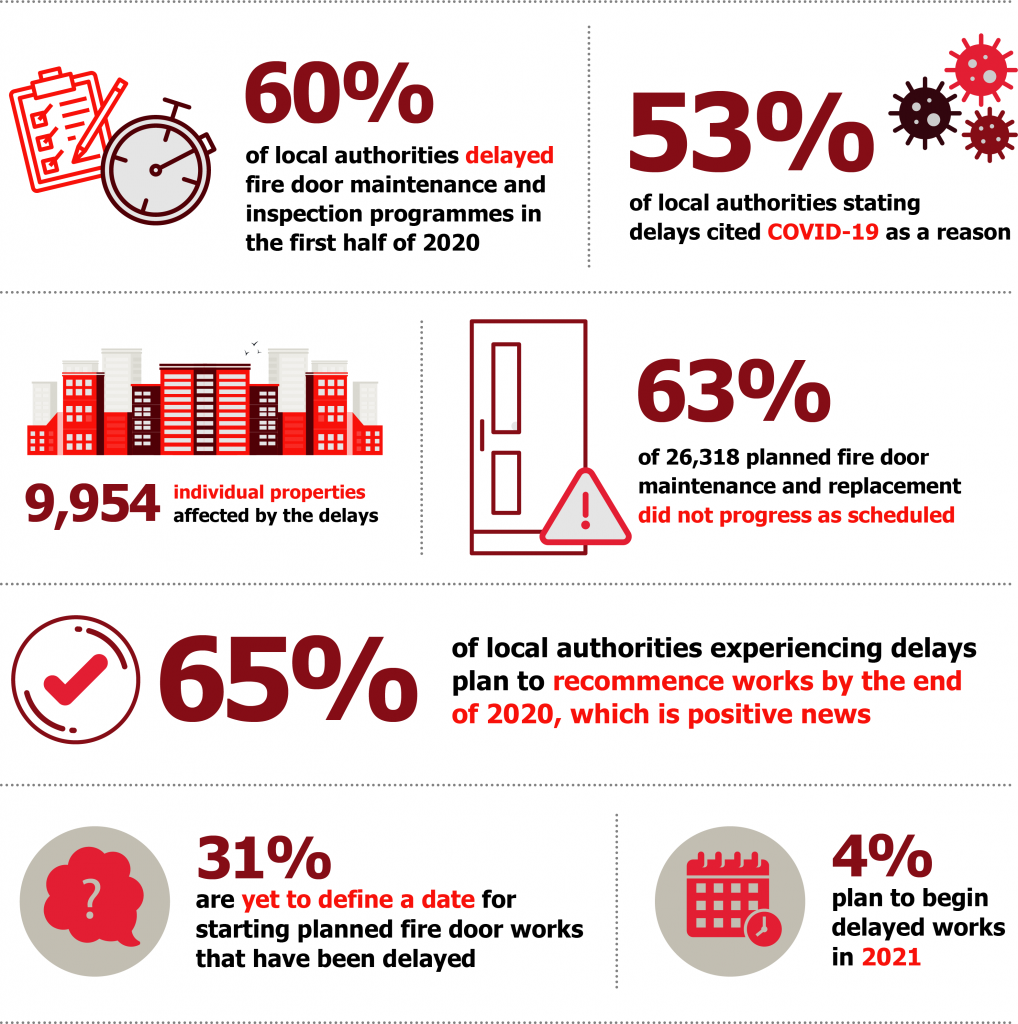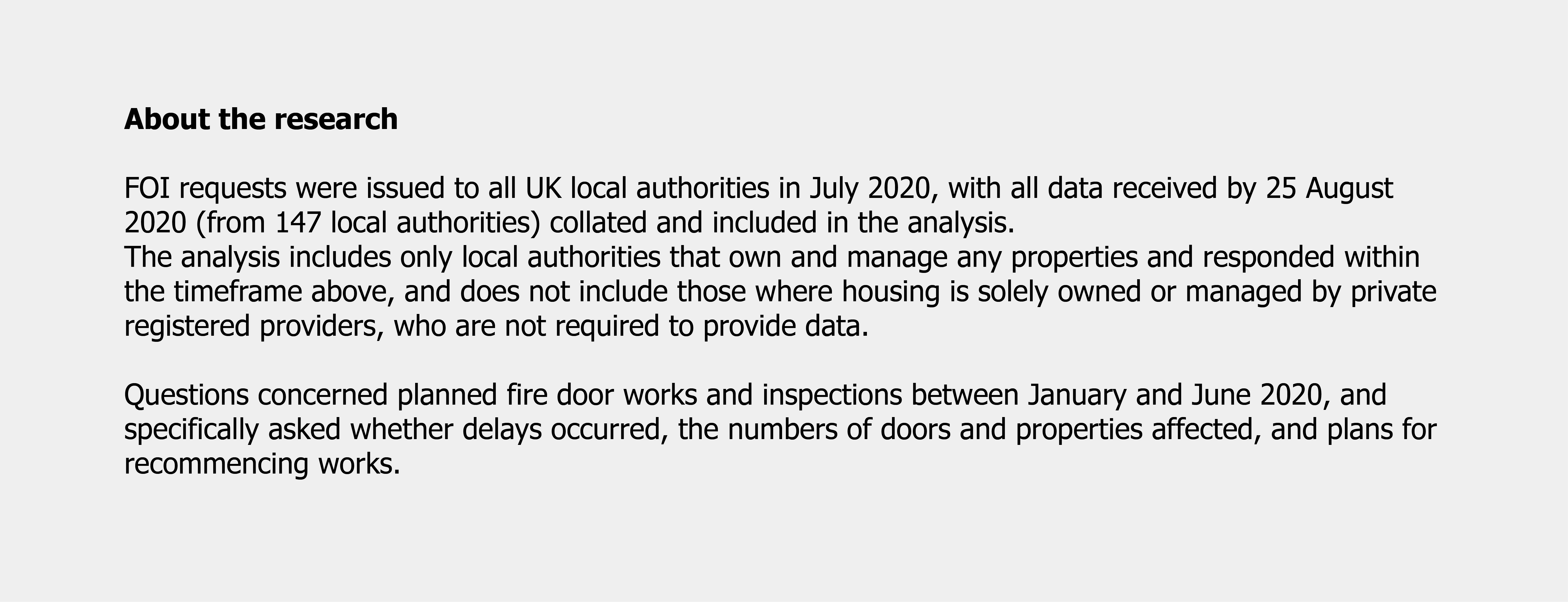60% of local authorities delay fire door programmes – leaving safety to chance

Fire Door Safety Week exists to stamp out the legacy of fire door neglect and to educate on the importance of fire door safety. To launch this year’s campaign, we have shared research into the state of fire door maintenance, inspection and replacement programmes across local authority owned and managed housing in the UK.
Over half (52%) of UK local authorities responding to a Freedom of Information (FOI) request reported delays to planned fire door maintenance and replacement in the first half of 2020. The number rises to 60% when inspection delays are also factored in.
According to the data obtained from 147 local authorities that own and manage their own housing stock, at least 26,318 fire doors were scheduled for maintenance or replacement between January and June 2020, but 16,580 did not progress – meaning 63% of individual planned works were delayed until at least the second half of the year, affecting a minimum of 9,954 individual properties.
In addition to delays to maintenance and replacement in the first half of the year, 31% of all responding local authorities stated their fire door inspection programmes were delayed, affecting at least 12,596 fire doors.
Not all responding local authorities provided reasons for delay, but over half (53%) of those experiencing delays cited COVID-19-related restrictions, including limited property access and availability of contractors due to social distancing guidelines. However, it was positive that several local authorities proactively mentioned that emergency repair works to fire doors continued throughout the lockdown period to maintain the safety of residents.
Of those local authorities that experienced delays, 65% intend to commence works by the end of the year. This signals that the majority recognise the importance of properly fitted and maintained fire doors. However, worryingly 31% of local authorities stated that they are yet to define a date for recommencing the planned works.
The findings follow an open letter from the London Fire Brigade to all housing providers in the Capital urging them to put plans in place ahead of new fire safety legislation coming into effect. The letter strongly advises building owners to consider the risks of existing fire doors in their fire risk assessments, regardless of the height of the building.

Fire’s don’t stop – it’s time to prioritise fire doors
It’s clear COVID-19 has understandably impacted on service delivery across a variety of sectors, but fires don’t stop. With the UK lockdown period forcing many people to spend more time at home, people without fit for purpose fire doors have been put at risk. There is a need for continued and urgent focus on ensuring the safety of all building occupants whether in local authority or privately-rented accommodation, workplaces or other building types.
Whilst we have focused upon local authority owned and managed housing stock, we strongly suspect that our insight reflects the wider market. We hope that through this years’ Fire Door Safety Week, we can draw attention to these important issues and encourage all with responsibility for fire doors to take urgent action across fire door maintenance, inspection and replacement.
When it comes to fire door inspections, fire doors can become damaged at any time, especially where they are frequently used. If a damaged door goes unidentified it cannot perform its life-saving role. Like previous years, this year’s Fire Door Safety Week campaign will emphasise the importance of regular inspections, carried out by trained and competent professionals.

A wealth of fire door information and guidance is available free of charge from the Fire Door Safety Week Toolkit, including the Fire Step Fire Door Check, which easily helps to identify fire doors that are not fit for purpose.
